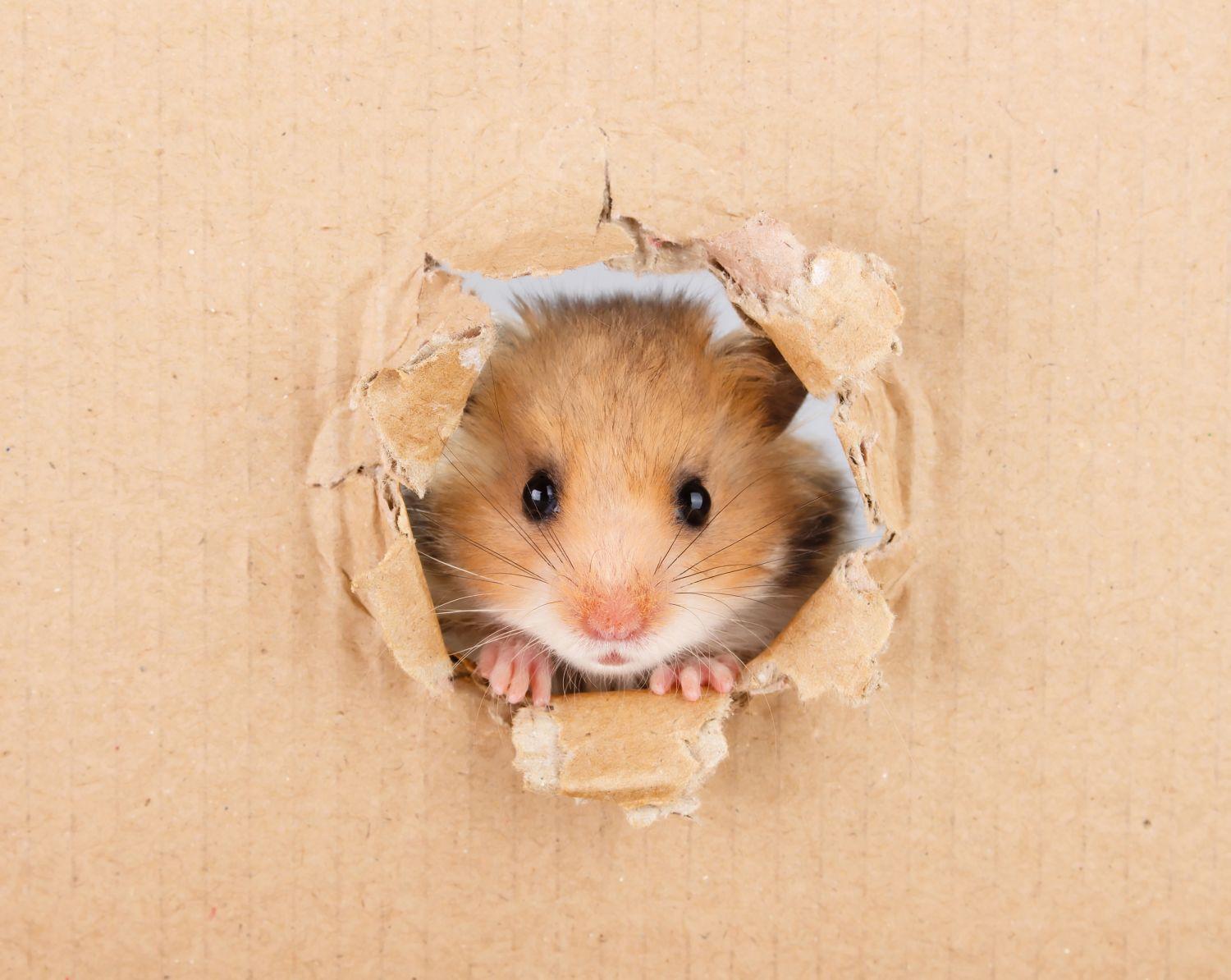Interesting Facts About Hamsters



See files for Hamsters
Because of their adorable appearance and their restless nature, hamsters often attract attention and arouse a lot of curiosity, especially among children. However, it is very important to inform yourself about everything you need to know about hamsters before adopting one. Once all the important hamster facts are known, one can begin to understand their; needs, relevant behavioral characteristics and how to care for one.
For this reason, if you are thinking about adopting a hamster as a pet or you are interested in learning more about these lovely rodents, take a look at this article. Here we will be uncovering the top 10 interesting facts about hamsters.
- There are many different hamster species
- Hamsters are prone to stress
- Hamsters have a short life expectancy
- Hamsters eat their babies
- Gender identification in hamsters
- Hamster teeth never stop growing
- A hamster’s diet
- Hamsters are crepuscular animals
- Hamsters love to explore
- Hamsters are very smart
1. There are many different hamster species
Although hamsters appear physically similar to the naked eye: there are in fact 24 different hamster species. The most popular hamster species include;
- Golden hamster.
- Chinese hamster.
- Djungarian hamster (Russian hamster).
- Roborovski hamster.
Knowing the particularities of each species is essential in order to know how to provide them with the appropriate care.

2. Hamsters are prone to stress
In the wild, hamsters are easy prey for many predators. For this reason, hamsters are constantly alert and able to react quickly to any danger. Therefore, hamster are prone to stress and therefore require a very positive environment in order to feel comfortable and safe.
Stress in hamsters carries many possible causes, such as:
- Sedentary lifestyle.
- Poor mental stimulation.
- Insufficient hygiene in their environment (cage).
- Nutritional deficit.
- Pathologies that cause hamsters pain or alter their senses.
Therefore, it is very important to be aware of hamster stress symptoms. If you notice any signs of hamster stress in your animal, we recommend taking it to a veterinarian in order to attend to the stress as quickly and adequately as possible. For more, take a look at our article on; Stress Symptoms In Hamsters.
3. Hamsters have a short life expectancy
Although the longevity of a hamster varies according to its breed, hamsters generally tend to have a short life expectancy. This life span can of course be longer or shorted depending on the care it receives and the conditions of its environment. In general, it is estimated that a hamster can live between two and four years, although some individuals can reach up to five or six years of age.
This life expectancy of hamsters needs to be taken into account before adopting one, especially if the prominent caregiver is a child. Although these rodents usually require simpler care in relation to their health and well-being, they will not be able to accompany as long as a cat or a dog, for example.
Therefore, before adopting a hamster for a child, it will be essential that, beforehand, you explain to the child that hamsters have a short life span.

4. Hamsters eat their babies
Animal cannibalism has been the subject of numerous scientific investigations and, even today, it is not possible to affirm with total certainty what the exact causes of this behavior are. In hamsters, this phenomenon arouses special curiosity and concern, but generally, we can confirm that it is because a hamster mother considers her babies weak or incapable of surviving.
However, there are other possible reasons that support why your hamster kills her babies, such as;
- The stress of feeding and breeding very large litters.
- Nutritional deficits in the baby hamsters.
- The presence of male hamsters in a cage.
- Lack of space in the hamster cage.
- Breeding too far from the hamster’s nest .
5. Gender identification in hamsters
Finding out the sex of your rodent is easier than you probably thought. The main method of identifying the gender of your hamster is by looking at its tail. Firs, one must observe the perianal area of the rodent, which is just below its tail, and exert slight pressure to separate the hair from the skin. In males, this region is more protuberant than in females, due to the presence of its testicles. In addition, the distance between the anus and the genital papilla (penis) is larger in a male hamster.
You can also check the umbilical gland to determine the sex of your hamsters. Males hamsters present a "navel" which is more visible than that of females.
However, ideally, you should wait until the hamster reaches sexual maturity in order to determine its sex correctly. In general, these small rodents mature and become sexually active very quickly: approximately 30 to 50 days after birth. Once sexually mature, a hamster is ready to mate and procreate. Therefore, it is also very important to be aware of a hamster’s reproductive cycle. If you want to avoid unwanted litters, we recommend keeping your male hamsters and female hamsters in separate cages.

6. Hamster teeth never stop growing
Hamster teeth, as well as other the teeth of rodents, never stop growing. Therefore, a hamster needs to wear down its teeth constantly in order to maintain optimal and symmetrical dental length. In the wild, hamsters look for small pieces of broken trunk or tree branches which they chew on in order to maintain correct dentition. However, in the case of domestic hamsters, it is their tutors who should be responsible for offering these elements to their pets.
In general, we recommended offering your hamster organic branches from fruit trees. Ideally, you should consult your veterinarian on how to adequately supply your hamster with the correct dental care. It is also very important to make sure that any branches or pieces of wood that you offer your hamster is organic. The reason for this is that some wood can be covered in pesticides, which are poisonous to hamsters.
7. A hamster’s diet
The care and feeding of the hamster are essential aspects in its breeding, which allow us to strengthen its immune system, prevent diseases and provide for an optimal quality of life. Hamsters are omnivorous animals that enjoy a varied and balanced diet that integrally meets their nutritional needs.
There are commercial feed, made specifically for hamsters, that facilitate the function of providing nutrients in a balanced way. However, we also recommend offering your hamster highly beneficial fresh, natural and organic food. These organic foods for hamsters include; cereals, legumes, nuts , fruits and vegetables beneficial for its health. Of course, make sure to not feed your hamsters food that is toxic for them. If you want to know which foods make up this list, take a look at our article; Forbidden Food For Hamsters.

8. Hamsters are crepuscular animals
Although it varies slightly depending on the species, the majority of domestic hamsters are nocturnal or crepuscular. For this reason it is not strange to see that many hamsters remain especially active at dusk, during the night or in the morning. Hamsters are possess especially large eyes, dominated by rods and photoreceptor cells which are responsible for vision when there is little light in the environment.
Therefore we recommend avoiding bothering your hamsters during the day when they sleep or rest.
9. Hamsters love to explore
Hamsters are especially curious animals and they adore digging and sniffing through their environment. Hamsters mainly use the mustache to detect and collect different information about different elements introduced in their space. Also, do not forget that these rodents usually dig burrows in the wild. This is why you should always offer it tunnel space in its nest.
Does your hamster burrow? For more, take a look at our article on: Preparing A Hamster’s Cage.

10. Hamsters are very smart
Like many other rodents, hamsters are especially intelligent animals. In addition to enjoying their well-developed senses, such as smell and hearing (especially important for social communication); hamsters are able to learn tricks and exercises quickly. By using positive reinforcement when training a hamster, it can begin to associate certain actions to certain events and happenings. A dog clicker, for example, can be a good tool to use during hamster training.
If you want to know more about these little rodents, take a look at our YouTube video;

If you want to read similar articles to Interesting Facts About Hamsters, we recommend you visit our Facts about the animal kingdom category.
- Haidarliu S & Ahissar E (1997). Spatial organization of facial vibrissae and cortical barrels in the guinea pig and golden hamster. Journal of Comparative Neurology, 385: 515-527.
- Hubrecht, R. and Kirkwood, J. (Eds.) (2010). The UFAW Handbook on The Care and Management of Laboratory and Other Research Animals (8th Ed.) UFAW: UK
- Keeble, E. and Meredith, A. (2009). BSAVA Manual of Rodents and Ferrets BSAVA: UK
- Jian-Xu Z., Cheng C., Heng G., Zhong-Shun Y., Lixing S., Zhi-Bin Z. and Zn-Wang W., (2003). Effects of weasel odor on behavior and physiology of two hamster species. Physiology & Behaviour 79: 549-552.
- Rowell, T. E., (1960). On the retrieving of young and other behaviour in lactating golden hamsters. Proceedings of the Zoological Society, London, 135, 265-282.










